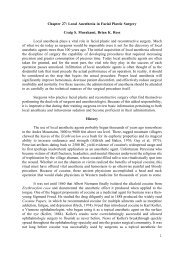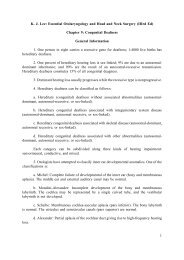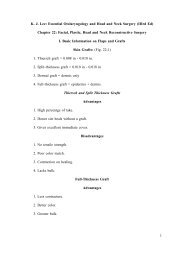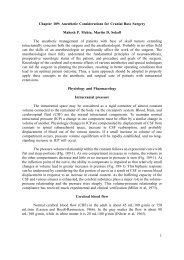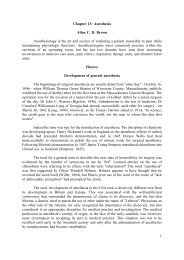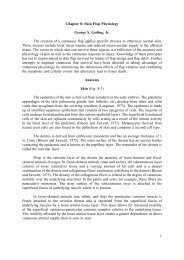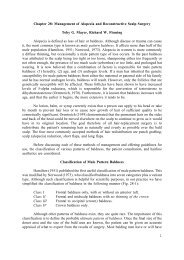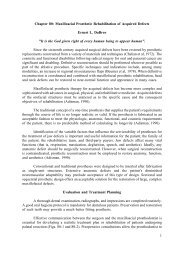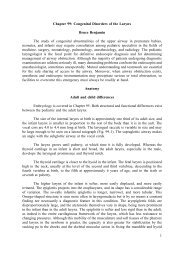Create successful ePaper yourself
Turn your PDF publications into a flip-book with our unique Google optimized e-Paper software.
ClassificationBroadly, debridement/excision can be classified into two main groups:Primary DebridementDone ideally within the first 12 hours after the incident. Delayed primary debridementhas been done outside this initial period where the wound was cleaned and packed. An oldseptic finger done for the first time (say one week old) would constitute a primarydebridement.Secondary Debridement(The "second", "third" or even "fourth" look.) Here there has been an initialdebridement. Because of the difficulty in removing all dead tissue the first time, a "revisit"to the lesion is made to make sure all dead tissue is removed.The general and ultimate aim of a debridement would be to achieve a clean, healthywound that will heal and restore structural normality as best as possible withoutcomplications.Debridement Following TraumaGeneral anaesthesia is ideal, although local anaesthetic has been used. However, thereis always the fear that during injection bacterial dissemination may occur. Local infiltrationmay also not be adequate for larger areas.In general, tourniquets are not used. They tend to lull the surgeon into a false senseof security regarding haemorrhage. It is also difficult to see which tissues are dead and whichare viable.Clean the wound with running water and soap. Though this is a non-physiologicalsolution. The alternative is mild detergent i.e., iodine or hibitane in water on surroundingskin, or better still, ringer's lactate in the wound. This process is carried on till the wound isliterally clean. Scrubbing wounds with brushes should be discouraged. Foreign material likesoil, gras, etc. are mechanically removed and picked out of the wound.The presence of grease and tar near or in a wound can be removed by ether oracetone. This should be done carefully without damaging the tissue.After the surgical preparation is completed, the wound should be meticulouslyexamined and explored to determine the extent of the damage. For this purpose widerincisions may have to be made joining or extending from the wound. Oozing is controlled bypressure and brisque haemorrhage by fine ligatures. Care is taken not to compromise thealready damaged tissue further. Once the extent of the damage has been determined, excisionfollows.2




